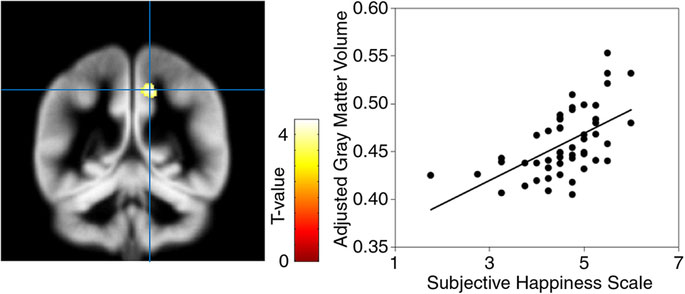Research Abstract
主観的幸福の構造的神経基盤
The structural neural substrate of subjective happiness
2015年11月20日 Scientific Reports 5 : 16891 doi: 10.1038/srep16891

幸福は、ヒトにとって究極の目的の1つとなる主観的経験である。心理学研究から、主観的幸福が高い信頼度で計測できることや、感情成分と認知成分から構成されていることが明らかになっている。しかし、主観的幸福の神経基盤はまだよく分かっていない。この問題に取り組むために我々は、脳構造を計測する磁気共鳴画像化法と、主観的幸福(経験した快感情および不快感情の強度と、人生の目的)を評価する質問紙を用いて調べた。その結果、主観的幸福のスコアと、右半球楔前部の灰白質体積の間に正の関係が見いだされた。さらに、同じ右楔前部の領域には、快感情強度・不快感情強度・人生の目的を統合したスコアとの関係も認められた。これらの知見は、右楔前部が、幸福の感情成分と認知成分を統合することで主観的幸福に関わっていることを示唆している。
Wataru Sato, Takanori Kochiyama, Shota Uono, Yasutaka Kubota, Reiko Sawada, Sayaka Yoshimura & Motomi Toichi
Corresponding Authors
Happiness is a subjective experience that is an ultimate goal for humans. Psychological studies have shown that subjective happiness can be measured reliably and consists of emotional and cognitive components. However, the neural substrates of subjective happiness remain unclear. To investigate this issue, we used structural magnetic resonance imaging and questionnaires that assessed subjective happiness, the intensity of positive and negative emotional experiences, and purpose in life. We found a positive relationship between the subjective happiness score and gray matter volume in the right precuneus. Moreover, the same region showed an association with the combined positive and negative emotional intensity and purpose in life scores. Our findings suggest that the precuneus mediates subjective happiness by integrating the emotional and cognitive components of happiness.

